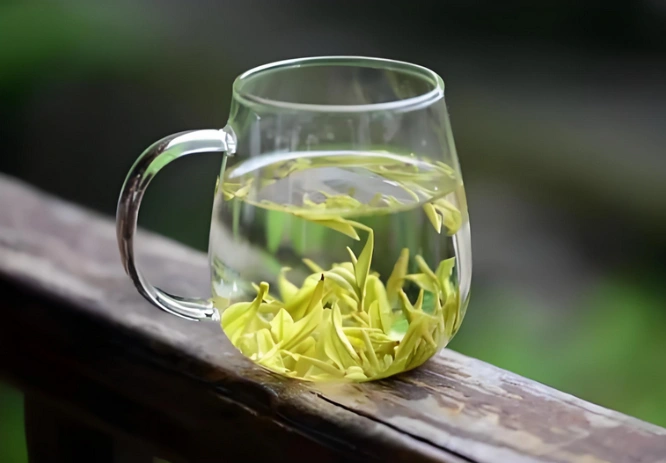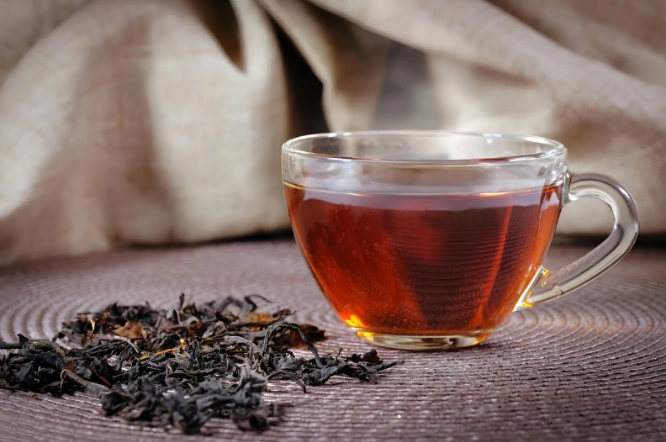white tea vs black tea is more than a showdown of colors—it’s a tale of two distinct experiences, each offering unique flavors, rituals, and health benefits. Whether you crave the whisper‑light sweetness of Chinese white tea or the robust malty warmth of Chinese black tea, understanding their differences empowers you to pick the perfect brew for any moment.
In this article, we’ll uncover their origins and processing, compare flavor and aroma, explore antioxidant and cardiovascular research, examine caffeine levels, and even discuss potential side effects. Let’s steep into the world of white and black teas—and discover which cup suits you best.
1. Origins & Processing: From Leaf to Cup
White Tea: Minimal Processing
White tea is the least processed true tea. Early spring buds and young leaves are hand‑picked and simply withered and dried, preserving their silvery hairs and subtle compounds. This minimal approach—no rolling, no oxidation—yields a pale liquor with delicate floral and honeyed notes.
Black Tea: Full Oxidation
Black tea undergoes full oxidation: leaves are rolled to rupture cells, then allowed to darken and develop rich flavor compounds. The result is a deep amber or reddish brew brimming with malty, fruity, or smoky aromas, depending on the region and cultivar.

2. Flavor & Aroma Profiles Compared
White Tea’s Delicate Notes
With white tea vs black tea, the first difference is sensory: white tea whispers of pear blossom, fresh hay, and light honey. Its soft mouthfeel invites slow sipping and mindful tasting.
Black Tea’s Bold Character
Black tea greets you with robust aromas—think cacao, toasted bread, or ripe berries. It’s full‑bodied and pairs beautifully with milk or sugar, offering comfort in every steep.
3. Health Benefits: Antioxidants & Beyond
Polyphenols in White vs Black Tea
Both teas hail from Camellia sinensis and share polyphenols—but white tea’s minimal processing preserves higher levels of catechins like EGCG, boosting its antioxidant punch. A 2015 study found white tea retains over 80% of its antioxidant activity after digestion, outshining many green and black teas (Stalmach et al., 2015; link) .
Research Spotlight on Heart Health
A Cochrane review noted that long‑term tea consumption—particularly black tea—can slightly lower LDL cholesterol and blood pressure, contributing to cardiovascular wellness (Health effects of tea, 2025) . The same polyphenols in white tea may offer even gentler support without the stronger tannic bite.
4. Caffeine Content: A Gentle vs Robust Lift
White Tea Caffeine Levels
A typical cup of white tea contains 15–30 mg of caffeine, offering a mild lift without overstimulation. Its L‑theanine content further smooths the experience, promoting calm focus.
Black Tea Caffeine Levels
Black tea delivers 40–70 mg per cup—about half of coffee’s load. This makes it ideal for those who want more pep than white tea but less intensity than espresso.

5. Chinese White Tea vs Chinese Black Tea
Regional Varieties & Traditions
- Chinese White Tea: Varieties like Baihao Yinzhen (Silver Needle) and Bai Mudan (White Peony) are prized for their delicate buds and artisanal harvest.
- Chinese Black Tea: Keemun and Dian Hong are classic examples, known for their wine‑like notes and rich, complex bodies.
Key Differences in Taste & Culture
White tea ceremonies emphasize quiet appreciation and sensory immersion. Black tea traditions—from British afternoon tea to Indian chai—focus on conviviality and bold flavors.
6. Potential Side Effects: Know Before You Sip
White Tea Side Effects
Though mild, white tea can cause stomach upset or insomnia in sensitive individuals when consumed in excess due to its caffeine and tannins (white tea side effects).
Black Tea Side Effects
Black tea’s higher caffeine and tannin levels can lead to jitters, heartburn, or iron absorption issues if overindulged (black tea side effects). Moderation is key for both.
7. Brewing Tips: Unlocking Optimal Flavor
Water Temperature & Steep Times
- White Tea: 175–185°F (80–85°C), 3–5 minutes.
- Black Tea: 200–212°F (93–100°C), 3–4 minutes.
Leaf Quality & Ratios
Use 2 g of leaves per 6 oz water. Invest in whole‑leaf teas to savor richer flavors and more healthful compounds.

🔗 To learn more about how to make tea, check out Tanbiwencha’s YouTube video explaining how to make tea.
8. Lifestyle Pairings: When to Choose Which
Morning Energy vs Evening Relaxation
Begin with a cup of black tea for a robust morning boost; switch to white tea in the evening for gentle unwinding.
Food Pairings & Occasions
- White Tea: Delicate pastries, light salads, or solo contemplative sips.
- Black Tea: Hearty breakfasts, cheese platters, or sociable afternoon tea.
9. FAQs: Your White Tea vs Black Tea Questions
Q1: Which tea has more antioxidants?
White tea often leads by a small margin due to minimal processing.
Q2: Can I blend them?
Yes—combining white and black leaves can yield unique flavor and caffeine profiles.
Q3: Are there any interactions?
Both can interfere with iron absorption; don’t drink right around meals if iron deficiency is a concern.
10. Conclusion: Find Your Tea Balance
white tea vs black tea isn’t about “better”—it’s about what suits your moment. Crave tranquility? Choose white tea’s whisper‑light sip. Need bold companionship? Let black tea’s robust character lift you. By understanding their origins, flavors, health profiles, and rituals, you can craft a personalized tea journey—one satisfying cup at a time.



